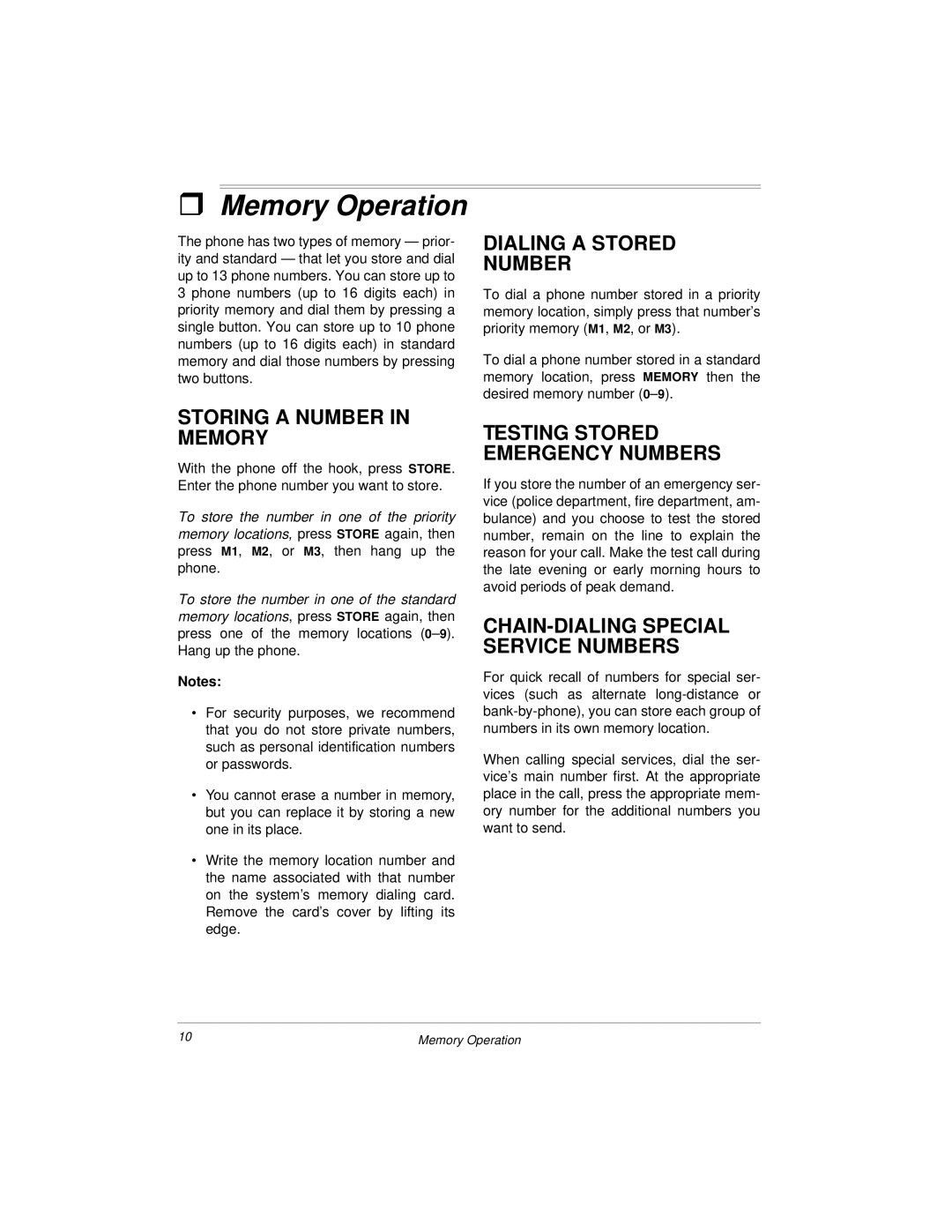
ˆMemory Operation
The phone has two types of memory — prior- ity and standard — that let you store and dial up to 13 phone numbers. You can store up to 3 phone numbers (up to 16 digits each) in priority memory and dial them by pressing a single button. You can store up to 10 phone numbers (up to 16 digits each) in standard memory and dial those numbers by pressing two buttons.
DIALING A STORED
NUMBER
To dial a phone number stored in a priority memory location, simply press that number’s priority memory (M1, M2, or M3).
To dial a phone number stored in a standard memory location, press MEMORY then the desired memory number
STORING A NUMBER IN MEMORY
With the phone off the hook, press STORE. Enter the phone number you want to store.
To store the number in one of the priority memory locations, press STORE again, then press M1, M2, or M3, then hang up the phone.
To store the number in one of the standard memory locations, press STORE again, then press one of the memory locations
Notes:
•For security purposes, we recommend that you do not store private numbers, such as personal identification numbers or passwords.
•You cannot erase a number in memory, but you can replace it by storing a new one in its place.
•Write the memory location number and the name associated with that number on the system’s memory dialing card. Remove the card’s cover by lifting its edge.
TESTING STORED EMERGENCY NUMBERS
If you store the number of an emergency ser- vice (police department, fire department, am- bulance) and you choose to test the stored number, remain on the line to explain the reason for your call. Make the test call during the late evening or early morning hours to avoid periods of peak demand.
CHAIN-DIALING SPECIAL SERVICE NUMBERS
For quick recall of numbers for special ser- vices (such as alternate
When calling special services, dial the ser- vice’s main number first. At the appropriate place in the call, press the appropriate mem- ory number for the additional numbers you want to send.
10 | Memory Operation |
